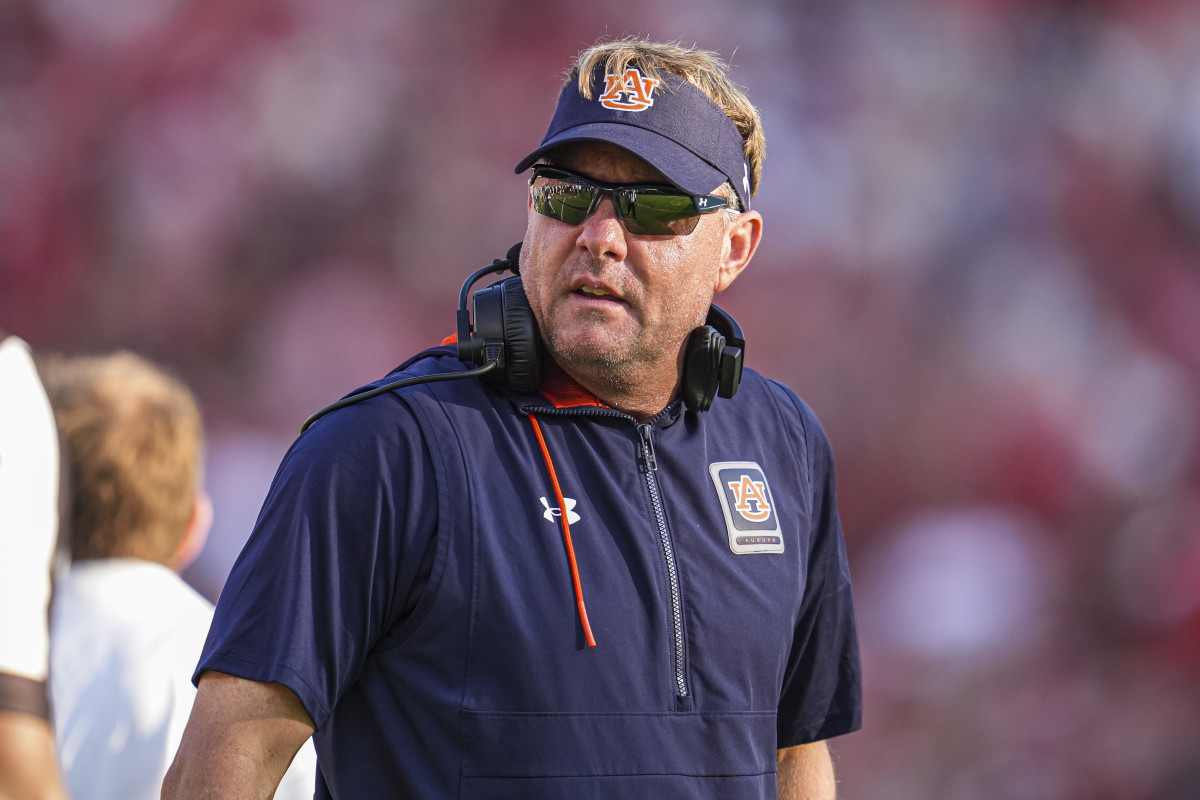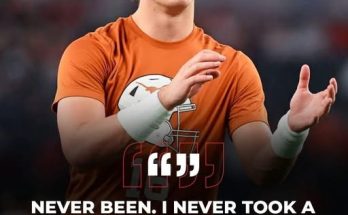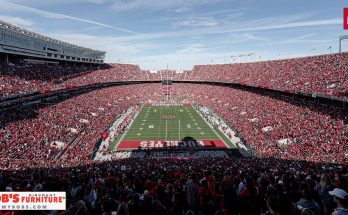It’s one thing for a college football program to endure a tough recruiting cycle. It’s another for its head coach to be seen on the golf course while the team’s future is seemingly slipping away. That’s exactly the controversy swirling around the embattled head coach of one of the nation’s most storied programs, as images and reports surfaced over the weekend showing him enjoying a leisurely round of golf while his school’s recruiting board continues to fall apart.
The fallout has been swift, sharp, and polarizing. Fans are furious. Boosters are calling for accountability. Rival programs are having a field day. And inside the building, there’s reportedly mounting frustration and concern among staff, players, and prospective recruits. The optics of this moment are as bad as they come in college football—where perception is often as powerful as performance.
To understand the outrage, it’s important to view this not as a one-time PR blunder but as a flashpoint in a larger pattern of stagnation, decline, and misaligned priorities. The program in question, long revered as a national championship contender, has been teetering on the edge of mediocrity for several seasons. Once a beacon for five-star recruits and top-tier talent pipelines, it now finds itself losing battles to schools it once dwarfed in prestige. As high school commitments for the 2026 class roll in at a rapid pace elsewhere, this program has watched helplessly as multiple top targets have committed to rivals or pulled interest altogether.
Recruiting rankings don’t tell the whole story, but they do offer a window into the direction a program is heading. In this case, that window shows a freefall. Once consistently ranked in the top five nationally, this powerhouse has now slipped out of the top 25, with some recruiting analysts suggesting they may finish with their worst class in over a decade if changes aren’t made—and soon.
That makes the recent golf outing by the head coach feel like a slap in the face to many in the fan base. It wasn’t just that he played a round of golf. It was that he did so on the very weekend that several elite recruits made their official visits to competing programs. For a head coach, June and July are pivotal months in the recruiting calendar, especially in the new era of NIL (Name, Image, and Likeness) negotiations and accelerated commitments. Instead of flying to visit prospects, attending 7-on-7 showcases, or meeting with his recruiting coordinators, the coach was photographed smiling in polos and cleats, swinging freely, seemingly without a care in the world.
Public backlash was immediate. Social media lit up with criticism. Prominent alumni and former players voiced their concerns. Some questioned whether the coach was still fully committed to turning things around. Others speculated that his job security may not be as stable as previously thought. A once-unified fanbase is now divided—some defending the coach’s right to a break, others calling for his resignation.
To be fair, coaching college football at the highest level is grueling. The hours are long, the pressure is intense, and burnout is real. But optics matter. And leadership, especially during a crisis, demands sacrifice and visibility. When the house is on fire, you don’t step outside to play 18 holes—you grab a hose. That’s the sentiment shared by many around the program right now.
Behind the scenes, reports suggest that several key staffers warned the coach against appearing too relaxed during such a critical period. But insiders say he brushed off those concerns, insisting he had “earned a day” to clear his head. He reportedly told close confidants that he didn’t believe the current recruiting situation was as dire as portrayed in the media. That confidence—or denial—has only fueled further speculation that the coach may be out of touch with the urgency of the moment.
Complicating matters is the fact that this isn’t the first time questions have been raised about his work ethic. Earlier this spring, rumors circulated about his limited involvement in NIL fundraising and player retention meetings. While he publicly claimed to support the university’s efforts, several boosters noted his lack of presence at critical donor events. That absence has now extended to the recruiting trail, where other head coaches are outworking him—and out-hustling his staff—on a weekly basis.
What makes this more painful for fans is the knowledge of what this program used to be. They remember when the school’s name alone was enough to land elite talent. They remember the iconic bowl wins, the packed stadiums, the electrifying quarterback play, and the iron-clad defense. Now, those memories feel distant. And instead of building on that legacy, the current regime seems content to coast on reputation—at a time when college football is evolving faster than ever.
The transfer portal and NIL have transformed the landscape, demanding aggressive recruiting strategies and 24/7 engagement. Gone are the days when tradition alone was enough. Today’s recruits want transparency, opportunity, and visibility. They want to see coaches who are invested—not just in words but in presence. That’s what makes this golf outing so damaging. It sends a message, intentional or not, that the head coach may not be fully in the fight.
As the firestorm continues, university leadership is reportedly monitoring the situation closely. While there’s no indication yet of an impending dismissal, sources suggest the athletic director has “heightened concern” about the direction of the program. One insider described the mood inside the athletic department as “tense, defensive, and searching for answers.” Morale among assistant coaches has dipped, with some quietly exploring other opportunities in case things unravel further.
Recruits are also taking notice. In recent interviews, two top-100 prospects hinted that they were re-evaluating their interest in the program, citing “instability” and “uncertainty” around the coaching staff. Meanwhile, rivals are using the coach’s golf outing as a recruiting pitch, telling players: “You want to play for someone who’s grinding to win—not someone teeing off while the ship sinks.”
It’s a harsh narrative, and maybe even an unfair one in some respects. But in college football, perception often becomes reality. And right now, the perception is damning: a once-great program slipping away, led by a coach more committed to his swing than his signees.
The question now is what happens next. Can the coach right the ship? Will he re-engage and hit the recruiting trail with renewed energy and urgency? Or will this moment become symbolic of a broader collapse—another cautionary tale of a coach who lost touch at the worst possible time?
One thing is certain: the margin for error has evaporated. This season will not just be about wins and losses—it will be about whether the head coach can regain the trust of a fractured fan base, reconnect with the recruiting trail, and restore the fight that once defined the program’s identity. Because in college football, especially at the top, you don’t get many mulligans. And right now, he’s already one stroke over par.


